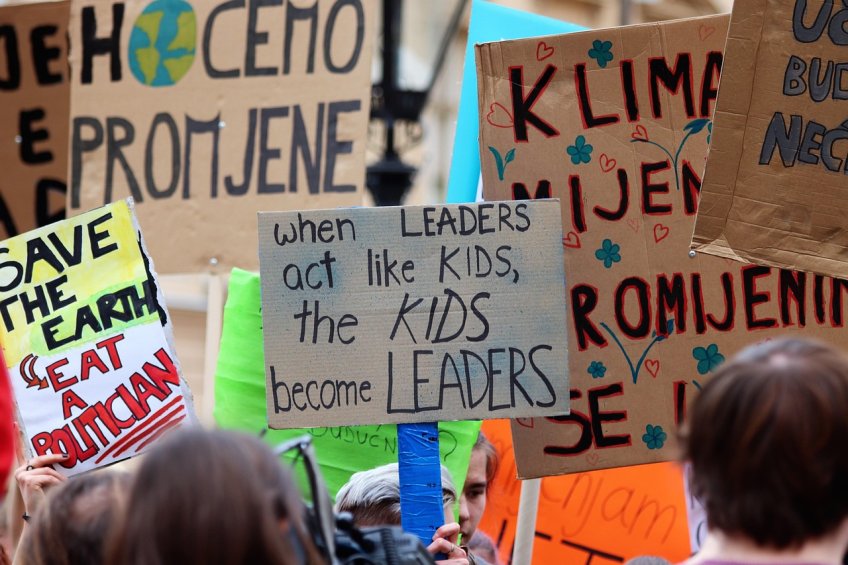Rising rents, unstable employment and unpaid internships. For many young Europeans, the path to independence is paved with uncertainty. Four out of ten 16-30-year-olds in the EU are concerned with the rising living costs. Laura Léger, a 27-year-old international relations graduate living in Brussels, is one of them, and her struggle began already before she completed her degree.
“Housing has been one of the biggest challenges for me. I almost didn’t stay in Brussels for my master’s,” she explained. Laura had to pay €500 for a room and had to work “like crazy”, next to her studies, just to be able to have a drink with friends. “It was exhausting.”
Bills I got to pay
Léger’s experience reflects the anxiety among some young Europeans facing soaring living costs and unstable work conditions. While the EU’s Competitiveness Compass aims to make Europe more attractive to investors and innovators, the daily reality for many young people like Laura remains marked by uncertainty.
The Competitiveness Compass outlines a vision of economic growth, innovation, and green transformation. Among its many ambitions, it promises a more dynamic job market, support for start-ups and scale-ups, and investments in AI, clean tech, and sustainability. But it does not address systemic inequalities that continue to weigh heavily on young Europeans, particularly in the labour and housing markets.
“I just turned 27, and I’m still juggling internships and precarious jobs, getting paid below the poverty line,” Léger said. “Brussels is full of people like me – passionate, well-qualified, but stuck in a system where demand is far greater than supply.”
Many internships in Brussels, as in other major EU cities, are unpaid or underpaid. This creates a playing field tilted in favour of those with family support, she stressed. “If you can afford to work for free for six months, great. But most of us can’t. It’s a system that favours privilege, while the rest of us are left struggling to build experience and pay rent at the same time.”
While the EU’s focus on innovation and deregulation may boost markets, they do not automatically guarantee equitable access to quality employment or affordable housing. And the psychological toll is mounting, Léger pointed out.“Financial stress, housing worries, job insecurity – they all add up,” she reflected. “The pressure to ‘make it’ in a city like Brussels, in a competitive field, while being constantly underpaid, took a real toll on my mental health.”
That toll is shaping how many young Europeans view their futures. “I used to be more idealistic about my career path,” she said. However, her view changed, and new questions come up, like ‘What job will be able to pay the bills?’ “It’s a big mental shift, and not one I was expecting.”
The Competitiveness Compass – A boost for the European future?
The master plan for Europe was presented this year in Davos, Switzerland, on January 21. At the World Economic Forum (WEF), president of the European Commission Ursula von der Leyen laid out 27 pages filled with ambitious goals and optimism, to make Europe economically more attractive. “Now we have a plan. We have the political will. What matters is speed and unity. The world is not waiting for us”, said Ursula von der Leyen.
The plan is based on the Draghi report, presented by Mario Draghi, a former European Central Bank President. He was tasked by Von der Leyen to outline his personal vision for the future of European competitiveness.
The green corridor in front of the plenary hall of the European Parliament in Strasbourg. Credits: Mia Stremme
The message for both visions is clear: The EU’s goal is to focus on innovation, decarbonization and security. These three fields are the core areas and build the base of the plan according to a press release. The EU will remove barriers to make the Single Market more attractive for start‑ups and scale‑ups, covering corporate, insolvency and tax law. It will also spotlight AI to drive development and industrial adoption in key sectors, under the innovation pillar of Security, Compass’s third pillar, will be strengthened by reducing dependencies and enhancing resilience.
On top of these three areas, the Compass also includes five horizontal enablers: simplification via the Omnibus proposal, lowering Single Market barriers, boosting financial competitiveness, promoting skills and quality jobs, and improving policy coordination.
According to Dirk Jandura, President of the German Federal Association of Wholesale, Foreign Trade and Services, companies expect fewer official hurdles, national regulations, administrative requirements, duties and a harmonisation of packaging, labelling and safety standards from the Compass. All in all, it is a step in the right direction, he said, but remarked: “The Compass must be followed by concrete action in order to finally achieve a turnaround.”
Draghi’s plan fails to consider the role of the EU in a global context. For Jandura, this is a weak point: “The compass does not clearly address how Europe intends to keep up with these competitors or even set its own standards.”
Economic growth in the realisation of environmental goals
At the same time, sustainability is identified as a strategic priority. According to the Compass, ecological change can promote innovation, attract investment, and ensure long-term economic resilience. While the green transition is presented as a path to resilience and growth, the need for more ambitious climate action is increasingly being voiced by younger generations. In public discourse and civil society, many young people highlight what they view as a gap between individual environmental efforts, such as recycling and cycling, and the broader structural changes they believe are necessary to address climate challenges.
A study of youth aged 7 to 18 in the US and France in 2022 found that participants often viewed individual actions as insufficient without broader systemic and political change. Brussels resident Laura Léger also expresses the same concern: “We recycle a lot and do it when we can, but then we see big polluters going unchecked. This creates a feeling of powerlessness, particularly among young people who care deeply about the environment but don’t feel as though they are being heard.”
This view reflects a broader debate about the role of economic growth in achieving environmental ambitions. The Competitiveness Compass is aligned with the green growth framework, which proposes that decarbonisation and economic development can be achieved simultaneously, primarily through technological innovation, regulatory clarity, and market incentives.
Credits: Pixabay.com
The climate dilemma facing Europe
However, alternative perspectives, such as those associated with degrowth, raise questions about whether continuous growth is compatible with ecological limits. Scholars argue that achieving sustainability may require not only more efficient production but also a reconsideration of economic priorities and consumption patterns. These debates are increasingly present within academics, politics and youth circles.
Although the Competitiveness Compass does not engage directly with degrowth ideas, it emphasises a climate transition that supports competitiveness and is guided by a technology-neutral approach, particularly in areas like clean hydrogen and industrial innovation. This reflects an attempt to balance environmental goals with economic stability. But it remains unclear whether this approach can meet the level of change that young people are calling for without putting growth ahead of climate goals.
For now, the Competitiveness Compass offers Europe a roadmap for innovation and growth, but for many young Europeans, the real question is whether that future will be one they can afford to take part in.


